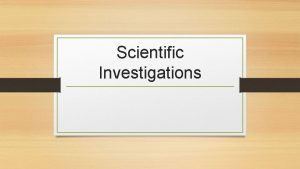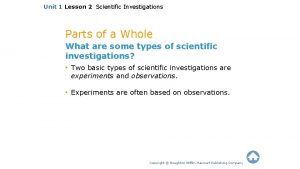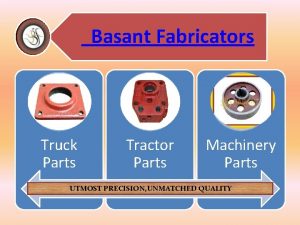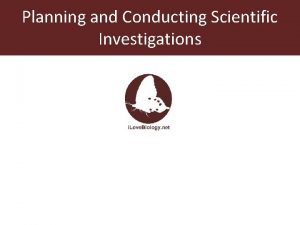Scientific Investigations What are the parts of a








- Slides: 8

Scientific Investigations What are the parts of a scientific investigation? What is a fair test and a variable?

Fair Test Where only one factor (variable) is changed during the test to make sure that factor affects the test. Ex: Jill wants to find out “What is the effect of the number of coils on an electromagnet? ” What is the variable? Is this a fair test?

Variable • Manipulated – the one factor that is changed in the test • Responding – because the manipulated variable is changed, how does it affect the test? Ex: Think about Jill’s experiment? What is her manipulated variable? Because that changes, what is going to be the responding variable?

Scientific Procedure 1. Identify a testable question that can be investigated (one variable) 2. Do some research on the topic 3. State a prediction about your question based off the information from your research Ex: What should Jill do after she knows she wants to find out how the coils affect the electromagnet?

Scientific Procedure 4. Design an experiment • • List the materials you need List the steps you will need to take to investigate Ex: What will Jill need and what will she need to do?

Scientific Procedure 5. Record or organize data (observations) in charts and graphs. 6. Study the data in the graphs or charts.

Graphing This is what Jill found out, make a graph on the back of your paper. Looking at the data, should you use a bar graph or line graph? What type of data is this? # coils 20 30 40 50 Strength 10 # washers 18 35 60

Scientific Procedure 7. Explain the results. What happened? 8. Compare results to prediction. Was your prediction correct? Is it okay if it wasn’t correct?















